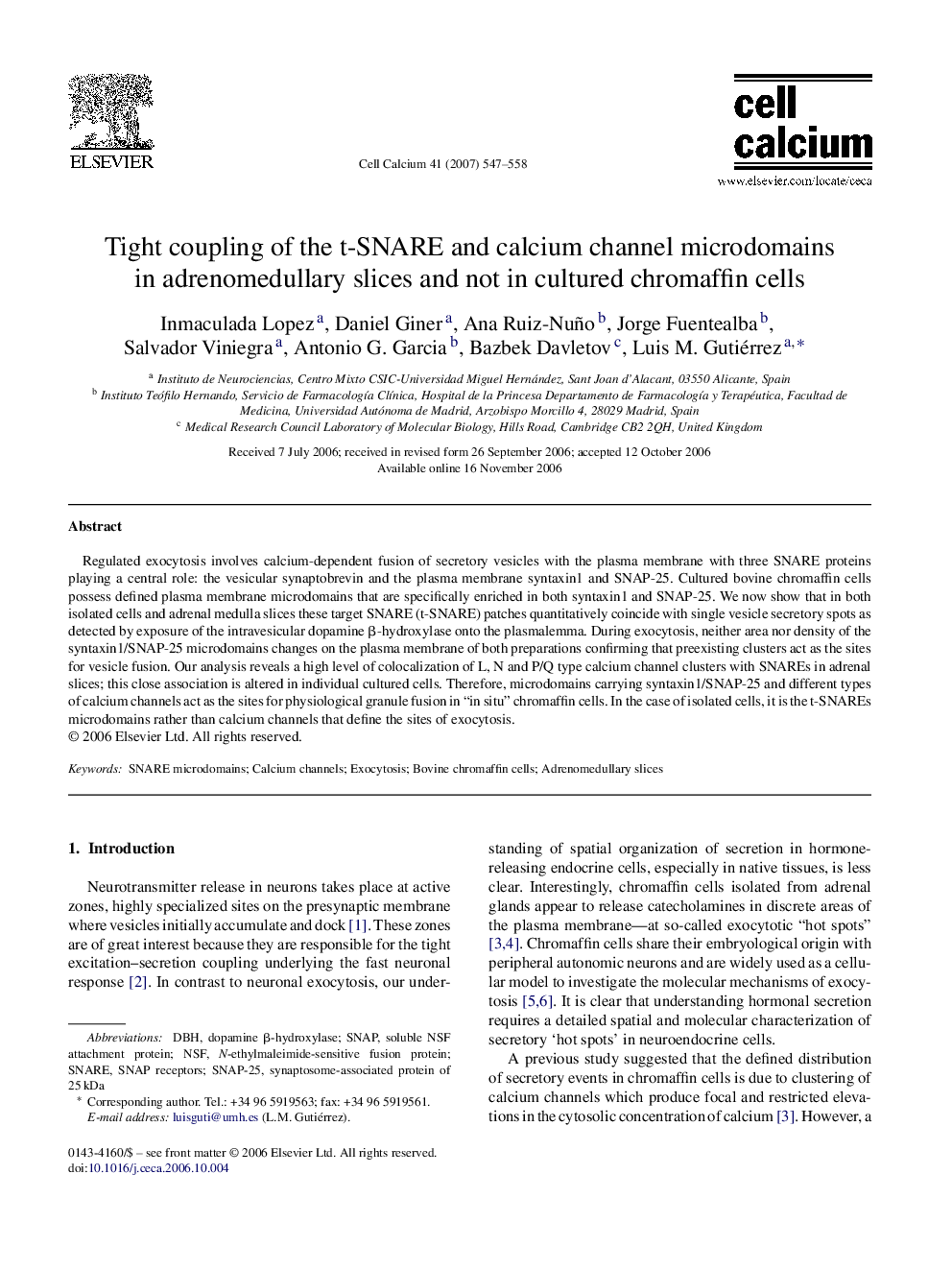| Article ID | Journal | Published Year | Pages | File Type |
|---|---|---|---|---|
| 2166539 | Cell Calcium | 2007 | 12 Pages |
Regulated exocytosis involves calcium-dependent fusion of secretory vesicles with the plasma membrane with three SNARE proteins playing a central role: the vesicular synaptobrevin and the plasma membrane syntaxin1 and SNAP-25. Cultured bovine chromaffin cells possess defined plasma membrane microdomains that are specifically enriched in both syntaxin1 and SNAP-25. We now show that in both isolated cells and adrenal medulla slices these target SNARE (t-SNARE) patches quantitatively coincide with single vesicle secretory spots as detected by exposure of the intravesicular dopamine β-hydroxylase onto the plasmalemma. During exocytosis, neither area nor density of the syntaxin1/SNAP-25 microdomains changes on the plasma membrane of both preparations confirming that preexisting clusters act as the sites for vesicle fusion. Our analysis reveals a high level of colocalization of L, N and P/Q type calcium channel clusters with SNAREs in adrenal slices; this close association is altered in individual cultured cells. Therefore, microdomains carrying syntaxin1/SNAP-25 and different types of calcium channels act as the sites for physiological granule fusion in “in situ” chromaffin cells. In the case of isolated cells, it is the t-SNAREs microdomains rather than calcium channels that define the sites of exocytosis.
